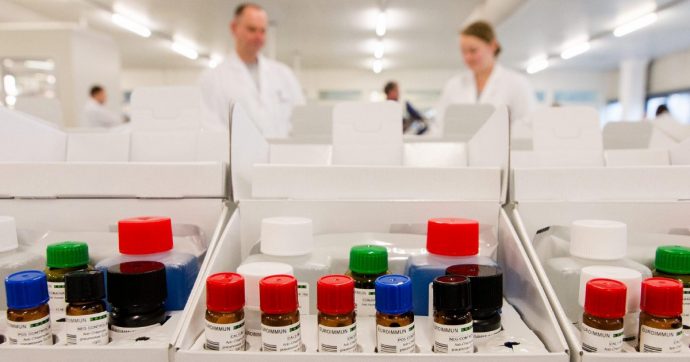Proteggersi dal Covid con una soluzione di H2O2
E’ una leggenda metropolitana o ci sono dei fondamenti scientifici?
Riflessioni sul lavoro di Amedeo F. Capetti (Osp.le L. Sacco, Università di Milano)
È in pubblicazione un lavoro che ripropone il lavaggio nasale con una soluzione di H2O2 al 3%. Tale trattamento protratto per 14 giorni, sembra sia capace di proteggere i soggetti più fragili portatori di SARS-CoV-2. Questa volta però, l’H2O2 è stata somministrata con Atomix wave. [1]
[1] Amedeo F Capetti et al. Short-term inhibition of SARS-CoV-2 by hydrogen peroxide in persistent nasopharyngeal carriers. https://www.onlinelibrary.wiley.com/reader/content/10.1002/jmv.26485/format/pdf/OEBPS/pages/1.page.xhtml
Ed ecco la pubblicazione:
Introduzione sui nasal Sprays
Cleaning the nasal passages with a saline nasal spray has been historically used to reduce symptoms and shorten the duration of disease at the early stage of upper respiratory tract infection (URTI). Twenty-five percent of URTIs are caused by human coronaviruses.6
Nasally delivered antiviral therapy may be an option to prevent COVID-19 at the early onset of infection, especially for health care workers who are at risk of exposure.
Researchers investigated hypertonic saline nasal irrigation and gargling in an open-label, randomized, controlled trial, and saw an association with significantly reduced duration of illness, transmission within a household and viral shedding for the common cold.9
Similar results were obtained in two randomized, double-blind, placebo-controlled trials assessing the effectiveness of carrageenan nasal spray in URTIs.6
Researchers in the UK have recently proposed povidone iodine nasal spray as a prophylactic treatment for health care workers during COVID-19.14 There is strong evidence in vitro to support the efficacy of povidone iodine against SARS-CoV-2 and its safety in nasal application.15 Nasodine, a povidone-iodine nasal spray developed for treating URTIs by an Australian company, is currently in a phase III clinical trial. Several clinical trials are currently underway worldwide examining the efficacy of intranasal povidone iodine ranging from 0.5–10% in reducing SARS-CoV-2 viral load.
Hydrogen peroxide nasal spray
The use of hydrogen peroxide nasal spray has also been discussed as a preventive therapy; however, there is no clinical evidence to prove its efficacy and safety. Hydrogen peroxide is an established viricidal disinfectant and antiseptic effective against SARS-CoV- 2, but its activity on nasal mucosa is unknown. The nasal irrigation application was first suggested to treat septic sinuses in the 1910s.21 In a mouse model that was infected with influenza virus, the nasal epithelial cells produced hydrogen peroxide as a protective response.22 In contrast, as a strong oxidizing agent, addition of hydrogen peroxide to the in vitro nasal epithelial cells led to oxidative stress and cell injury.23 The Agency for Toxic Substances and Disease Registry (ATSDR) has warned that inhalation of household-strength hydrogen peroxide (3%) can cause respiratory irritation, while higher strengths may be associated with severe pulmonary injury.24 Therefore, more safety and efficacy studies are needed before recommending hydrogen peroxide nasal spray for COVID-19 prevention.
In spite of a limited number of studies using a nasal spray to prevent COVID-19, there is a great potential to develop an effective therapy delivered by the nasal route to inhibit virus replication at an early infectious stage. Prolonged contact time may be a desired characteristic for such an antiviral nasal spray to improve clinical outcomes.
Referenza Dr. A Capetti
Quali sono le conclusioni del lavoro?
L’uso del perossido di idrogeno (1,5 e 3% per 30 secondi)) usato per lavare le cavità nasali o somministrato per via aerosolica era già stato ampiamente segnalato, [1],[2], è si è dimostrato poco efficace se comparato all’uso dello iodio Povidone (0,5% per 15 secondi). [3] Possiamo pertanto ipotizzare che il risultato positivo ottenuto dal Dr. Capetti sia dovuto anche all’uso dell’Atomix wave ®: sia alla sua capacità di vuotare la cavità nasofaringea dal muco sia all’azione della soluzione ipertonica. La capacità di ripristinare una libera respirazione nasale è già stata pubblicata nel 2019. [4] Anche se questa inequivocabile capacità, ovvero la percezione del naso libero, può essere percepita direttamente dall’utilizzatore subito dopo il trattamento.
Messaggio
Washing the nose with H2O2 to stop SARS-CoV-2
Amedeo Capetti et al. ORCID iD: 0000-0003-4633-1035 (Osp.le Sacco Università di Milamo)
The procedure was repeated using pure H2O2 3% solution and patients were asked to wash their mouth and perform 2’ gargles and then spit avoiding to swallow.
Daily nasal cleaning with Atomix® WaveTM was indicated for 14 days.
Conclusioni
L’analisi della letteratura e le conclusioni del Dr. A Capetti ribadiscono la necessità e ripetiamo la necessità di non restare a bocca aperta per difendersi dai virus e quindi:
R/ Atomix wave
Mattina e sera quotidianamente per chi è “a rischio” ha il naso chiuso e respira abitudinariamente a bocca aperta.
R/ Atomix wave
Un trattamento mattina e sera per 3 – 4 giorni quando si frequentano ambienti a rischio o il naso è percepito chiuso.
[1] Caruso AA, Del Prete A, Lazzarino AI, Capaldi R, Grumetto L. Might hydrogen peroxide reduce the hospitalization rate and complications of SARS-CoV-2 infection? Infect Control Hosp Epidemiol. 2020 Apr 22:1-2. doi: 10.1017/ice.2020.170. Epub ahead of print. PMID: 32319881; PMCID: PMC7308628.
[2] Caruso AA, Del Prete A, Lazzarino AI. Hydrogen peroxide and viral infections: A literature review with research hypothesis definition in relation to the current covid-19 pandemic. Med Hypotheses. 2020 Jun 1;144:109910. doi: 10.1016/j.mehy.2020.109910. Epub ahead of print. PMID: 32505069; PMCID: PMC7262503.
[3] Bidra AS, Pelletier JS, Westover JB, Frank S, Brown SM, Tessema B. Comparison of In Vitro Inactivation of SARS CoV-2 with Hydrogen Peroxide and Povidone-Iodine Oral Antiseptic Rinses [published online ahead of print, 2020 Jun 30]. J Prosthodont. 2020;10.1111/jopr.13220. doi:10.1111/jopr.13220
[4] Di Berardino F, Zanetti D. Nasopharyngeal drainage with a new device: preliminary results of nasal spirometry. J Biol Regul Homeost Agents. 2019;33(1):259-262.
Articolo pubblicato su https://pubmed.ncbi.nlm.nih.gov/32319881/

